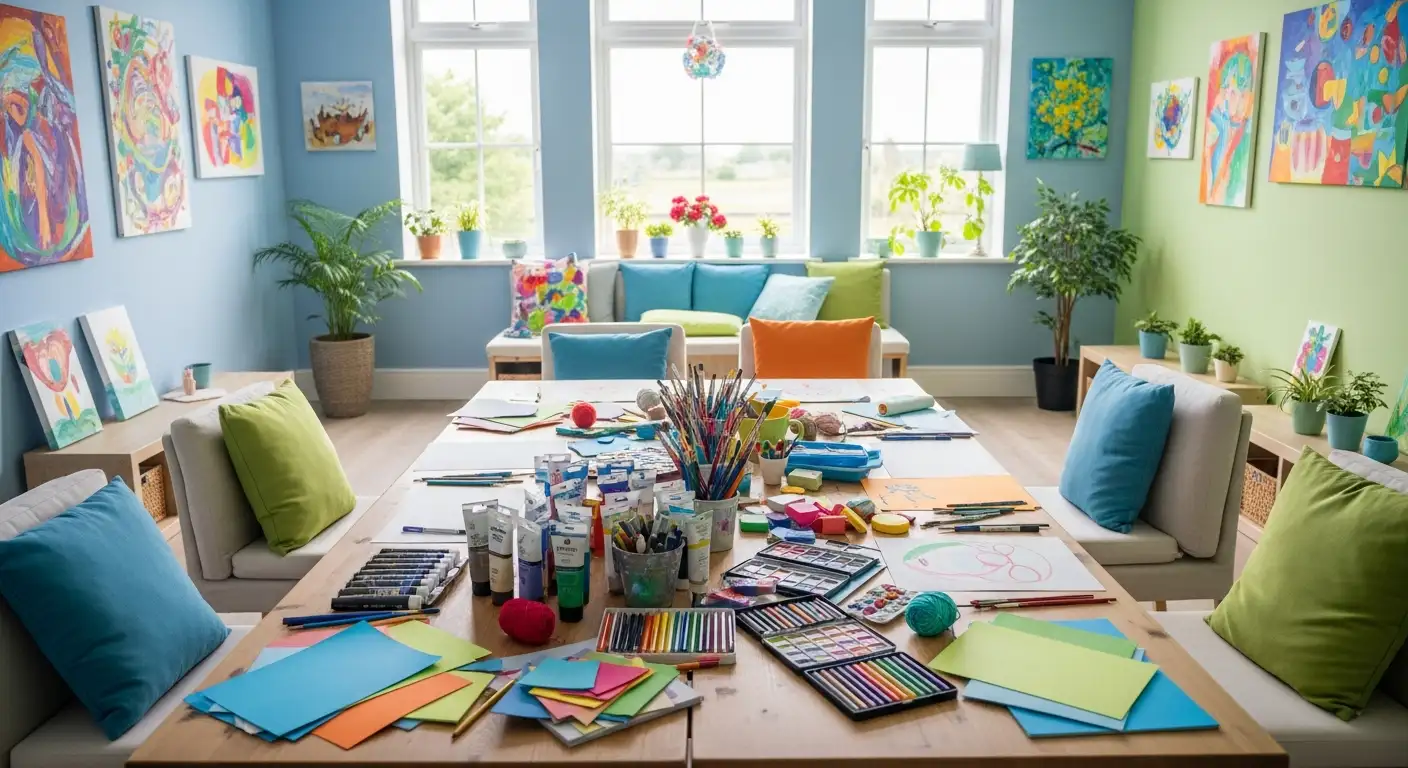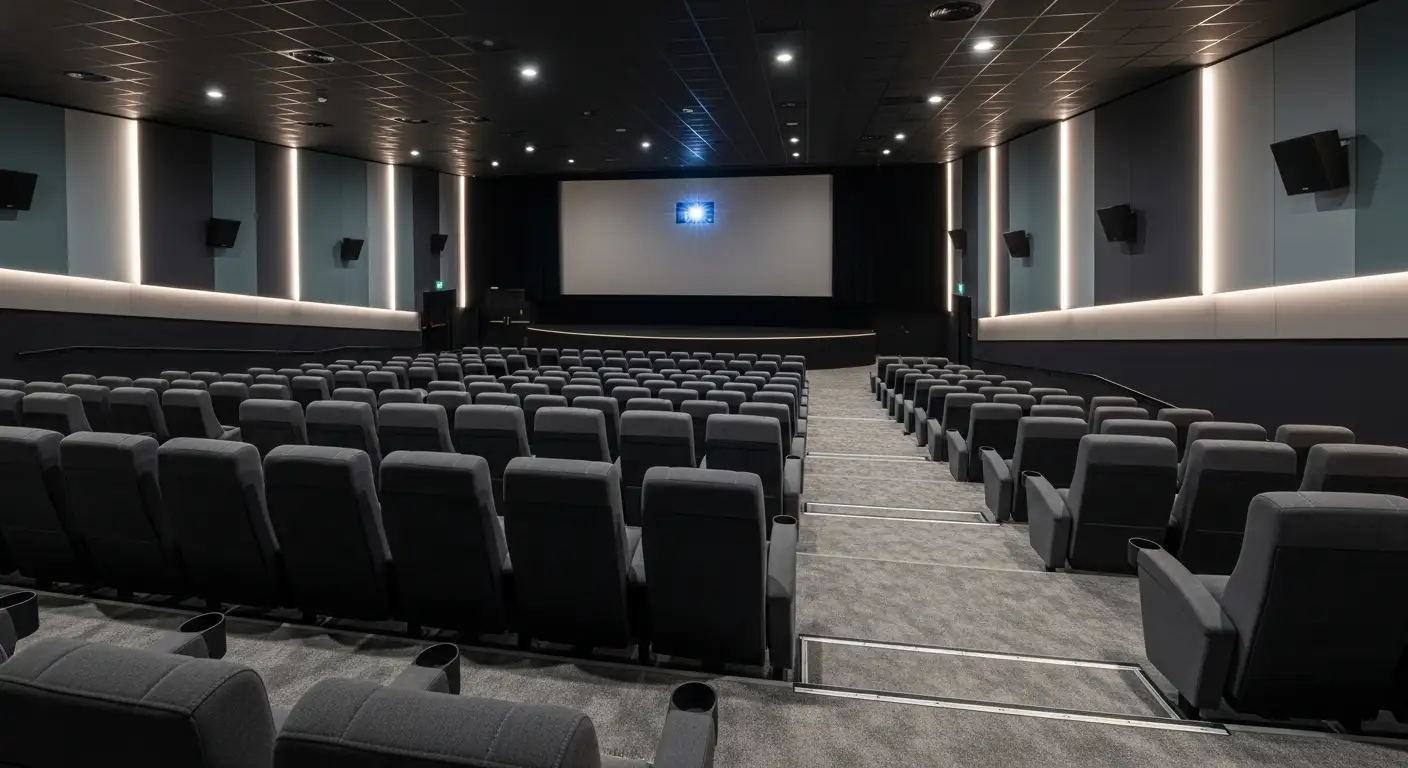Signs Your Toddler Is Not Autistic
Introduction to Child Development and Autism Differentiation
Navigating the complexities of early childhood development can be challenging for parents and caregivers. While concerns about autism are common, it's important to recognize the signs that indicate a toddler is developing typically. This article provides an in-depth look at normal developmental milestones, behaviors that are not signs of autism, and when to seek professional guidance.
Typical Developmental Milestones in Toddlers

What developmental milestones indicate typical toddler growth?
Toddlers develop rapidly across various areas including motor skills, language, social interactions, cognition, and play. Recognizing these milestones can help parents and caregivers understand if a child is following a typical developmental path.
In terms of motor skills, most children begin walking independently around the age of 12 months. By this time, they are also able to sit, crawl, and stand steadily. As they approach age 2, they often start running, jumping, and climbing, showing significant growth in coordination and muscle strength.
Language development is another crucial indicator. By 12 months, many toddlers babble with varied sounds, say their first words, and understand simple commands. Between ages 18-24 months, toddlers usually start combining words into short sentences and demonstrate an expanding vocabulary.
Social behaviors such as smiling, eye contact, and using gestures like pointing are also signs of healthy development. By 18 months, most children engage in shared play and can imitate actions and sounds. They start using gestures like waving goodbye or giving objects to others.
Cognitive skills develop largely through imitation and problem-solving. Around 12-24 months, children try to imitate everyday activities, explore their environment, and respond to their name. They enjoy playing with toys in different ways, including pretend play like feeding a doll.
Play behaviors reflect cognitive and social growth. Toddlers enjoy interest in toys, often spinning wheels, flipping objects, or exploring in their own manner. They engage in pretend play, such as pretending to feed a doll or having a tea party, especially from 18 months onward.
Table summarizing developmental milestones:
| Age Range | Common Milestones | Details |
|---|---|---|
| 12 months | First steps, babbling, responding to name | Walk independently, say simple words, turn when called |
| 18 months | Several words, pointing, playing pretend | Combine words, use gestures, imitate actions |
| 24 months | Vocabulary of 50+ words, simple sentences | Use phrases, follow simple instructions, engage in parallel play |
| 3 years | Run, jump, use utensils, complex sentences | Demonstrate social skills, understand colors/shapes, solve simple problems |
Overall, reaching these milestones reflects typical child development. Nevertheless, variations are normal, and children grow at individual rates. Regular checkups with healthcare providers can ensure children develop healthily and can identify any concerns early.
You can get more detailed information about specific ages and milestones by searching "typical toddler developmental milestones," which provides comprehensive guidelines and resources.
When to Seek Professional Evaluation
Signs of developmental delays
Early identification of autism and other developmental delays is vital for providing support and intervention. Parents and caregivers should watch for signs such as limited eye contact, delayed speech, difficulty engaging in social interactions, repetitive behaviors, sensory sensitivities, fixation on specific objects, and resistance to routines. Noticing that a child does not respond to their name, avoids gestures like pointing, or shows little interest in playing with peers can also be warning signs.
In infants, a lack of social smiles by 6 months, minimal joint attention behaviors, and lack of babbling by 12 months are early indicators. As children grow, delays in motor milestones, limited language development, and difficulty understanding social cues further signal potential concerns.
Screening recommendations (ages 9, 18, 24 months)
The American Academy of Pediatrics recommends screening for autism at 18 and 24 months, using tools like the M-CHAT-R questionnaire. These screenings aim to catch early signs that might not be obvious during routine check-ups. Typically developing children will respond to their name, imitate sounds, and engage in pretend play around these ages.
For children showing signs of delays, additional assessments earlier than these standard screenings can be helpful. Developmental milestone checklists provided by programs like CDC’s Act Early can guide parents and professionals in tracking progress and identifying concerns.
Parental observations and concerns
Parents are often the first to notice developmental differences. Ongoing observations about responsiveness, social engagement, language use, and play behaviors are crucial. If a parent notices their child is not making eye contact, doesn’t smile back, or shows repetitive behaviors, they should consider seeking an evaluation.
Feeling that the child is different from peers, struggling to understand social rules, or having trouble expressing feelings are common parental concerns. Even if some behaviors are within the realm of typical variation, persistent or multiple signs should prompt consultation with healthcare providers.
Risks for high-risk children
Children born prematurely, with a sibling already diagnosed with autism, or with certain genetic conditions are at higher risk for developmental delays and autism spectrum disorder. For these children, earlier and more frequent screening is recommended.
Parents and healthcare providers should monitor these children closely, and consider early intervention programs even if signs are subtle. Recognizing risk factors allows for proactive assessment and support, which can significantly improve developmental outcomes.
Importance of early intervention
Identifying developmental concerns early enables access to interventions that can improve skills and reduce challenges. Early support can enhance communication, social skills, and adaptive behaviors.
The earlier autism is diagnosed and addressed, the better the chances for positive developmental progress. Parents should feel encouraged to seek evaluations whenever they have concerns, and not wait for the child to meet all milestones perfectly.
Overall, vigilance, regular screening, and professional assessments are essential tools in ensuring children receive the help they need as early as possible.
Recognizing Behaviors Not Indicative of Autism

What are some common signs that a toddler is not autistic?
Toddler development can vary widely, but there are certain behaviors that strongly suggest a child is not on the autism spectrum. Typically, a toddler with age-appropriate language skills will be able to speak in full sentences and engage in meaningful back-and-forth conversations with caregivers and others. They usually respond reliably when called by name, showing good eye contact and sharing smiles during interactions.
Expressing interest in a range of toys and activities is another positive sign. These children are often involved in pretend play according to age norms, such as feeding a doll or playing roles, indicating imaginative engagement. They also tend to interact comfortably with other children, expressing smiles or initiating play.
Behaviorally, children not on spectrum generally do not exhibit repetitive movements like hand-flapping or rocking, nor do they develop rigid routines or fixations on specific objects. Their routines are usually flexible, and they can adapt when activities or environments change.
Overall, toddlers displaying these behaviors—developmental progress in language, social engagement, varied play, and flexible routines—are unlikely to be autistic. Recognizing these positive signs can help reassure parents and caregivers that the child's development aligns with typical expectations.
How to Recognize Non-Autistic Traits in Toddlers

How can I tell if my toddler is not autistic?
To help determine if your toddler is developing typically, observe their responses to social cues and their ability to engage with others. A non-autistic toddler generally responds to their name by turning their head or making eye contact, smiles and laughs in response to social interactions, and places an emphasis on play and communication.
Toddlers not showing signs such as avoiding eye contact, delayed speech, or repetitive behaviors are often on track with other developmental milestones. For instance, they usually use gestures like pointing or waving, and their language skills progress from babbling to simple words around 12 months, building up to more complex phrases.
However, it’s important to remember that many autistic children also acquire these skills, sometimes on a typical timeline, which can make early identification complex. Regular checkups with healthcare providers and developmental screenings, such as the M-CHAT-R, can assist in monitoring progress.
A comprehensive assessment by specialists remains the most reliable method to determine if a child is autistic or not. If you notice your child responding appropriately and engaging in age-appropriate play, communication, and emotional expressions, these are positive signs. Conversely, missing several social and communication milestones, especially by 12 months, may warrant further evaluation.
Ultimately, early observation combined with professional guidance can help clarify your child's development. If concerns persist, consulting healthcare professionals experienced in childhood development can support early intervention efforts.
Conditions That May Be Mistaken for Autism
What are some conditions that can be mistaken for autism in toddlers?
Several health and developmental conditions can resemble autism in young children, making accurate diagnosis crucial. These conditions often include symptoms that overlap with ASD, but their underlying causes differ.
One common concern is speech delays caused by other issues such as hearing problems or general developmental delays. Children with hearing impairments, for example, may miss social cues or struggle with language development, which can be mistaken for autism-related communication challenges.
Sensory processing issues are another factor. Some children might react strongly or abnormally to sounds, textures, or lights — behaviors reminiscent of autism but not necessarily part of it.
Obsessive interests and hyperlexia, a phenomenon where children show an intense fascination with particular objects or print, also mimic some autistic traits without fulfilling the full diagnosis.
In addition, psychological disorders and genetic syndromes can be confused with autism. Conditions like Obsessive-Compulsive Disorder (OCD), reactive attachment disorder, and social communication disorder may present social or behavioral concerns similar to autism.
Genetic conditions such as Down syndrome, 22q11.2 deletion syndrome, or Rett syndrome may also display overlapping features, including delayed speech or repetitive movements. These differences highlight the importance of a comprehensive assessment by specialists.
Proper diagnostics involve detailed medical history, developmental evaluations, and sometimes genetic testing to distinguish autism from these other conditions. Correct identification ensures each child receives the most suitable intervention and support.
| Condition | Main Traits | Difference from Autism | Additional Notes |
|---|---|---|---|
| Speech delays (other causes) | Inability to speak early | Often tied to hearing loss or general delays | Early hearing tests can determine the cause |
| Hearing issues | Deafness or partial hearing loss | May cause delayed speech and social cues | Treatment with hearing aids or therapy can improve communication |
| Sensory processing issues | Unusual reactions to sensory input | Not necessarily linked to social communication difficulties | Common in other developmental disorders |
| Obsessive interests, hyperlexia | Intense focus on specific topics | Usually does not affect other developmental areas | Can sometimes be part of obsessive-compulsive behaviors |
| Psychological and genetic conditions | Varied symptoms | Differ in behavioral patterns and neurological basis | Require genetic testing and behavioral assessments |
This table summarizes common conditions that may be mistaken for autism, emphasizing the importance of professional evaluation to ensure appropriate diagnosis and support.
Understanding Behaviors That Are Not a Cause for Concern

What are some conditions that can be mistaken for autism in toddlers?
Several conditions can be mistaken for autism in toddlers due to overlapping symptoms. These include speech delays, hearing problems, and other developmental delays that may mimic autistic behaviors but stem from different causes.
Sensory processing issues, obsessive interests, and hyperlexia can also resemble autism's symptoms without necessarily indicating the disorder.
Additionally, psychological disorders like OCD, reactive attachment disorder, or social communication disorder, as well as genetic conditions such as Down syndrome or 22q11.2 deletion syndrome, may be mistaken for autism.
Accurate diagnosis requires thorough evaluation by specialists to differentiate autism from these other conditions and ensure appropriate intervention.
When should parents and caregivers consider that a behavior is normal?
Delayed speech that is due to other factors: Sometimes, speech development may be slower due to temporary factors like hearing issues, without indicating autism. Many children might start speaking later or show irregular speech patterns which are part of typical growth.
Normal tantrums and emotional outbursts: Toddlers often experience intense emotions and may throw tantrums as they learn to manage feelings. Such behaviors are typical and usually diminish with age.
Repetitive behaviors as part of normal growth: Repetition, such as playing with a favorite toy or watching the same video multiple times, is common in young children exploring their environment. These actions usually serve as comfort or learning tools.
Sensory sensitivities in typical children: Sensory reactions, like being bothered by loud noises or certain textures, can be normal parts of sensory exploration. Children often react differently without it indicating autism.
Preference for routines without being autistic: Seeking consistency or expressing dislike for changes is sometimes just a part of personality or a desire for predictability, not necessarily a sign of autism.
Why early discussion with healthcare professionals is essential
If parents notice behaviors that concern them, consulting a healthcare provider is vital. Professionals can evaluate whether these behaviors are part of typical development or if they suggest the need for further assessment.
Understanding the difference between normal developmental behaviors and signs of autism helps ensure children receive suitable support and avoid unnecessary anxiety or intervention.
Reassurance About Typical Behaviors in Toddlers
 Many parents worry when their toddler exhibits behaviors such as clinginess, repetitive actions, or preferences for routines. However, these behaviors are often part of normal development and do not necessarily indicate autism.
Many parents worry when their toddler exhibits behaviors such as clinginess, repetitive actions, or preferences for routines. However, these behaviors are often part of normal development and do not necessarily indicate autism.
Children naturally show a wide range of behaviors as they grow. For example, it is common for toddlers to prefer familiar routines or become upset when routines are changed. This desire for sameness helps them feel secure but does not mean they are autistic.
Sensory sensitivities, like being fussy about certain textures or sounds, can also occur in healthy children. They might cover their ears in noisy places or avoid certain foods without any underlying developmental concern.
Play behaviors are also important to consider. Toddlers may play with toys in simple, repetitive ways, such as spinning wheels or flipping objects. These actions are often part of exploring their environment and are typical of many children at this age.
Expressing affection, such as hugging family members or showing interest in physical closeness, signals healthy attachment. Interest in routines, consistency in favorite toys, and normal reactions to social interactions are signs that a child is developing normally.
Some behaviors—like tantrums or emotional outbursts—are common and temporary. These are part of learning to manage feelings rather than signs of autism.
What are some signs that a toddler is not autistic?
Some signs that a toddler is not autistic include progressing developmentally with age-appropriate language skills, such as speaking in full sentences and engaging in back-and-forth conversations. They typically respond consistently to their name, maintain eye contact, and smile when interacted with. They show interest in playing with a variety of toys and other children, and participate in pretend play appropriate for their age. Their behaviors are usually characterized by a lack of repetitive movements, rigid routines, or intense fixations on specific objects or subjects. Overall, a toddler who demonstrates typical social interactions, responsive communication, varied play, and flexible routines is likely not autistic.
Parents are encouraged to observe their child's overall behavior pattern and consult healthcare professionals if they have concerns. Early reassurance and understanding can help parents support their child's unique developmental journey.
Final Thoughts and When to Consult Professionals
Understanding the normal range of toddler behaviors is vital in distinguishing typical development from signs of autism. While many behaviors can seem concerning, most are part of healthy growth and exploration. Parents should trust their observations and seek expert guidance if they notice persistent delays or atypical behaviors. Early assessment and support can make a significant difference in a child's development, ensuring they reach their full potential. Remember, every child develops at their own pace, and with attentive care, most concerns can be addressed effectively.
References
- Signs of autism in children - NHS
- Early Signs of Autism - UCSD Neurosciences
- Putting Parental Worries to Rest: Signs Your Toddler is Not Autistic
- Signs that a child or adult may be autistic
- Autism Signs in Infants
- Signs of autism | Autism Speaks
- 10 Signs Your Baby Is Not Autistic: Indicators to Consider - Affinity ABC
- Signs Your Toddler Is Not Autistic - Astra ABA
- Signs of autism in children - NHS
Other articles
Recent articles

Cultural Perspectives On Autism Around The World

Autism And Creative Arts As Emotional Expression Tools

Developing Emotional Regulation Skills In Autistic Teens

Best Sensory-Friendly Lighting Solutions For Autism

Cognitive Behavioral Therapy Adaptations For Autism

Best Practices For Autism-Friendly Movie Screenings

Autism And Eating Challenges Beyond Picky Eating

Best Practices For Autism-Friendly Public Transport Design

Best Ways To Foster Collaboration Between Parents And Schools For Autism Support

Supporting Autistic Children During Transitions Between Activities

The Role Of Teachers In Fostering Autism Peer Acceptance

Using Art Therapy To Support Children With Autism

Autism And Strategies For Addressing Sensory Defensiveness

Autism And The Benefits Of Structured Leisure Activities

How To Support Autistic Students During Exam Season

Autism And Goal Setting For Personal Growth

How To Use Gamification In Autism Learning Programs

How Schools Can Reduce Bullying Of Autistic Students

Early Intervention Strategies For Autism Spectrum Disorder

The Role Of Therapists In Autism Life Skills Coaching

How To Support Autistic Individuals In Crisis Situations

Autism And Self-Care Routines For Stress Management

Understanding Echolalia And Its Role In Autism Communication

Autism And Fine Arts Education Benefits

The Impact Of Multisensory Learning On Autism Education

How Family Counseling Supports Autism Household Dynamics

Best Practices For Inclusive Playgrounds For Autism

Best Practices For Autism-Friendly Shopping Centers

How Autism Affects Fine Motor Skill Development

Best Ways To Introduce Sensory Activities Into Daily Routines

How Sports Teams Can Be Inclusive Of Autistic Players

Autism And Strategies For Building Workplace Resilience

Autism And The Impact Of Hormonal Changes During Puberty

How To Support Autistic Students In Foreign Language Classes

Best Ways To Teach Money Skills To Teens With Autism

Supporting Siblings Of Children With Autism

Autism And Co-Occurring Gastrointestinal Disorders

The Role Of Art Projects In Autism Sensory Integration

How Schools Can Incorporate Sensory Break Spaces

Best Practices For Autism Sensory Regulation At School

Autism And Strategies For Teaching Organizational Skills

Understanding The Relationship Between Autism And Anxiety Disorders

Autism And Life Planning For Long-Term Care

Exploring Visual Supports In Autism Education

Ways To Encourage Social Interaction In Children With Autism

The Connection Between Autism And Dyscalculia

The Role Of Occupational Therapy In Transition Planning For Autism

The Role Of Physical Therapists In Autism Motor Skills Support

How To Teach Decision-Making Skills To Autistic Young Adults

The Connection Between Autism And Epilepsy

Best Practices For Transitioning Autistic Children Into New Schools

Autism And Time Management Challenges In Adulthood

The Role Of Visual Arts In Autism Communication Development

How To Address Tactile Defensiveness In Autism

Best Practices For Telehealth Autism Therapy

How To Help Autistic Children Develop Friendship Skills

How Schools Can Support Autistic Students In Career Prep

Best Strategies For Autism-Friendly Event Planning

Understanding Noncontingent Reinforcement In Autism Behavior Plans

How Drama Therapy Benefits Autistic Individuals

Best Practices For Autism-Friendly Fitness And Recreation Centers

Best Ways To Promote Healthy Social Media Use For Autistic Teens

How To Help Autistic Children Cope With Public Speaking

Autism And Strategies For Managing Unexpected Changes

Best Podcasts About Autism For Parents And Educators

Autism And The Impact Of Seasonal Changes On Behavior

The Role Of Diet In Managing Co-Occurring Conditions With Autism

Sleep Challenges In Autism And Practical Solutions

Best Ways To Build Daily Routines For Autistic Children

Best Practices For Supporting Autistic Entrepreneurs

Autism And Strategies For Navigating Large Social Gatherings

Adaptive Sports And Recreational Activities For People With Autism

Autism And The Benefits Of Story-Based Learning Activities

Understanding The Role Of Play In Autism Development

Autism And The Impact Of Environmental Noise On Learning

How To Create Autism-Friendly Community Spaces

Autism And Chronic Health Conditions: What To Know

The Role Of Care Managers In Autism Life Planning

How To Teach Social Boundaries To Autistic Children

How Autistic Individuals Experience Empathy Differently

How To Support Autistic Employees In Remote Work Settings

Autism And The Relationship Between Motor Skills And Learning

How To Create Community Resource Guides For Autism Families

How To Teach Daily Living Skills To Autistic Teens

Autism And The Impact Of Mind-Body Practices On Stress Reduction

Autism And The Benefits Of Outdoor Group Activities

How To Create Autism-Friendly Sensory Paths In Schools

Best Practices For Autism-Friendly Park And Recreation Areas

Autism And Strategies For Reducing School Refusal

Supporting Autistic Individuals In Public Speaking

The Role Of Diet In Managing Autism Symptoms

The Benefits Of Gardening Clubs For Autism Social Development

How To Prepare Autistic Children For Dental Visits

Autism And Employment: Career Paths That Work

Best Practices For Autism-Friendly Hotels And Lodging

The Impact Of Screen Time On Autism Development

Autism Screening Tools For Early Childhood

The Role Of Physical Exercise In Autism Therapy

Best Strategies For Supporting Autistic College Students

The Role Of Technology In Autism Early Detection
We’re All About You, Your Family, and Your Child

